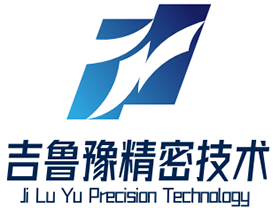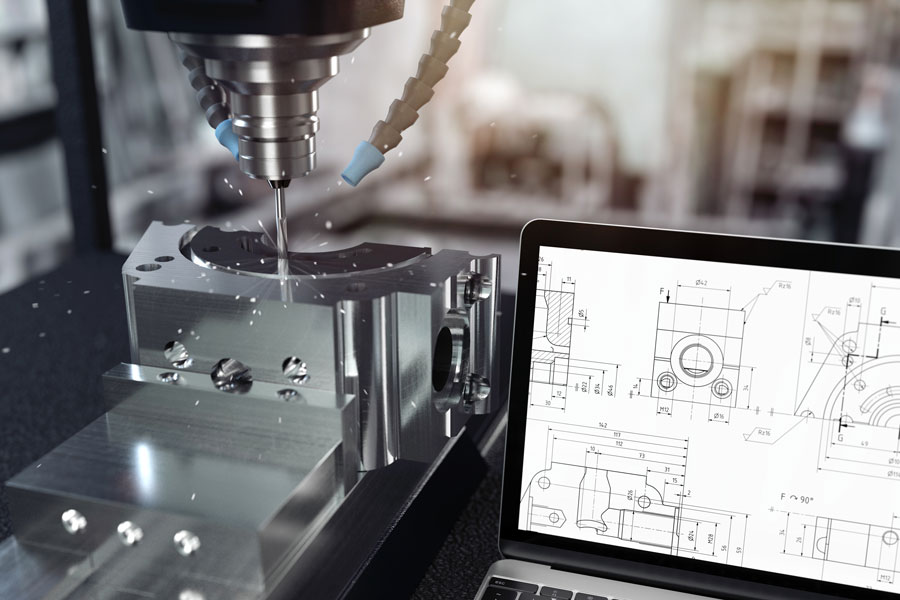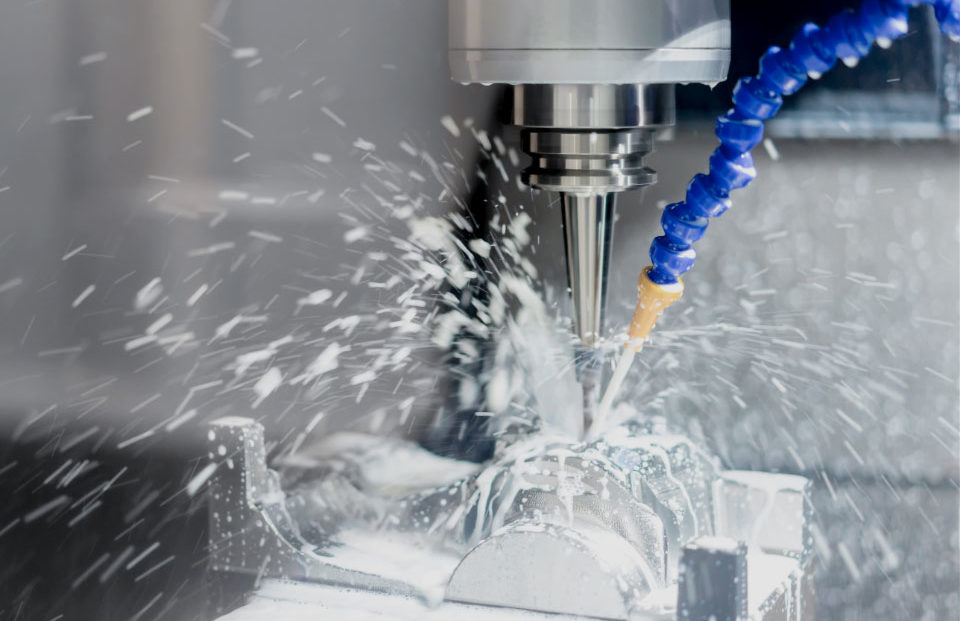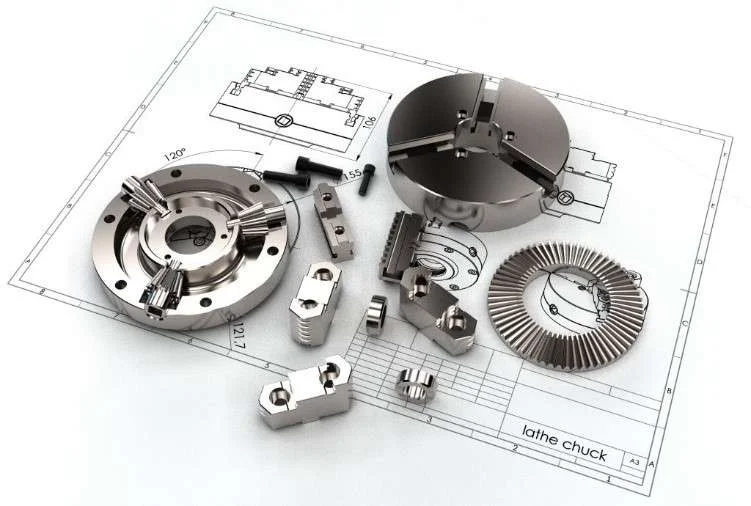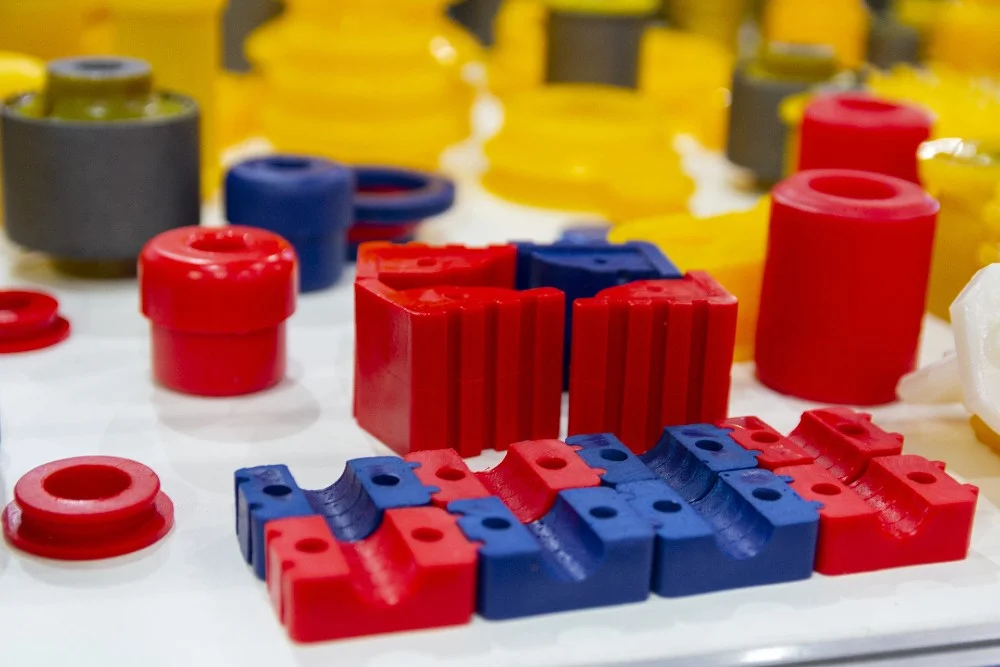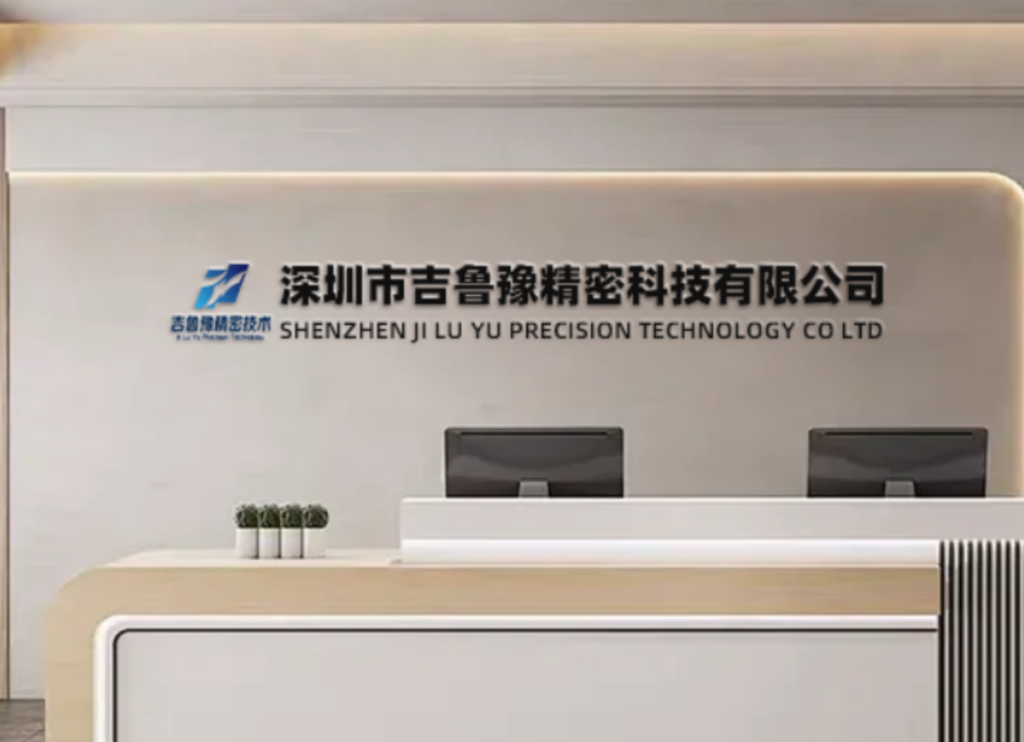Manufacturing Supply Chain Solutions: Revolutionizing CNC Machining Operations
In today’s global manufacturing landscape, precision components don’t just appear—they journey through a sophisticated network of processes, technologies, and partnerships. The difference between supply chain chaos and manufacturing excellence often comes down to one critical factor: integrated manufacturing supply chain solutions.
Manufacturing supply chain solutions represent the strategic integration of production processes, logistics, inventory management, and information systems to optimize the flow of materials and components from raw material to finished product. As specialized providers of CNC machining services, we understand that modern manufacturing success depends not just on precision machining capabilities, but on the seamless coordination of the entire production ecosystem. These comprehensive solutions address the complex challenges facing manufacturers today—from global supply chain disruptions and tariff complexities to the growing demand for customization and rapid delivery.
The evolution of supply chain management in CNC machining has transformed from simple logistics coordination to sophisticated digital networks that connect design, production, quality control, and delivery into a unified, efficient system. This transformation is driven by emerging technologies including AI-powered platforms, robotic automation, and real-time data analytics that enable unprecedented levels of visibility, control, and responsiveness across the manufacturing lifecycle.
The Growing Complexity of CNC Machining Supply Chains
The manufacturing landscape has undergone dramatic changes in recent years, introducing unprecedented challenges that demand more sophisticated supply chain approaches. Traditional linear supply chains have evolved into complex digital networks where disruptions in one area can ripple across entire production ecosystems.
The Modern Manufacturing Challenge
Today’s CNC machining operations face multiple intersecting challenges that impact supply chain stability and performance:
-
Global Supply Chain Volatility: Political changes, trade policies, and logistical bottlenecks create constant uncertainty in material availability and pricing
-
Tariff and Compliance Complexity: Layered tariff systems including reciprocal tariffs, Section 301 tariffs, and Section 232 national security measures add cost and administrative burden
-
Customer Demand for Customization: Growing expectations for customized components with faster lead times and smaller batch sizes
-
Labor Constraints: Technical workforce shortages and specialized skill gaps affect production capacity and quality consistency
-
Quality and Traceability Requirements: Increasingly stringent quality documentation needs, particularly in regulated industries like aerospace and medical devices
According to recent industry data, 91% of manufacturing technology companies report increased landed costs due to tariffs, with 85% forced to raise customer prices to offset these expenses. This cost pressure makes supply chain efficiency not just a competitive advantage, but a business necessity.
The Strategic Impact of Integrated Solutions
Manufacturing supply chain solutions address these challenges through strategic integration that delivers measurable business impact:
-
Cost Reduction: Streamlined operations and reduced inventory carrying costs typically lower total production expenses by 15-25%
-
Accelerated Time-to-Market: Integrated digital workflows can reduce prototype-to-production cycles by 30-50%
-
Enhanced Flexibility: Responsive supply networks adapt quickly to design changes, material substitutions, and demand fluctuations
-
Improved Quality: End-to-end process control and traceability reduce defects and improve first-pass yield rates
-
Risk Mitigation: Diversified sourcing strategies and real-time monitoring minimize disruption impact
Core Components of Modern Manufacturing Supply Chain Solutions
Effective supply chain management for CNC machining encompasses several interconnected elements that work together to create a seamless production ecosystem.
Digital Integration and AI-Powered Platforms
The foundation of modern manufacturing supply chains lies in digital connectivity that enables real-time information sharing and automated decision-making:
-
AI-Driven Procurement Platforms: Systems like MISUMI’s meviy platform allow users to upload CAD models and receive automated quotes, manufacturability analysis, and estimated delivery times within seconds
-
Digital Twin Technology: Virtual replicas of physical supply chains enable simulation, testing, and optimization before implementation
-
Cloud-Based Collaboration: Secure data exchange between designers, manufacturers, and customers streamlines the entire production workflow
-
IoT-Enabled Monitoring: Real-time tracking of machine performance, tool wear, and production status facilitates predictive maintenance and optimal resource allocation
These digital technologies create a “digital thread” that connects every aspect of the manufacturing process, from initial design through production and delivery, ensuring consistency, traceability, and continuous improvement.
Advanced Production Technologies and Automation
Modern manufacturing supply chains leverage advanced production technologies to enhance flexibility, efficiency, and quality:
Table: Advanced Manufacturing Technologies in Modern Supply Chains
| Technology | Supply Chain Application | Impact Metrics | Implementation Considerations |
|---|---|---|---|
| 5-Axis CNC Machining | Complex part production in single setups | 40-60% reduction in setup time, improved accuracy | Higher initial investment, specialized programming |
| Robotic Machine Tending | 24/7 unmanned operations with consistent quality | 61% capacity increase, 44% throughput boost | Integration with existing equipment, programming flexibility |
| Multi-Axis Mill-Turn Centers | Complete machining in single chucking | 30-50% cycle time reduction, improved concentricity | Tooling integration, programming complexity |
| In-Line Metrology | Real-time quality verification and feedback | 90% inspection time reduction, immediate process correction | System integration, calibration protocols |
| Additive Manufacturing | Rapid prototyping, tooling, complex geometries | 70% faster prototypes, simplified assembly | Material limitations, post-processing requirements |
The integration of these technologies creates manufacturing systems capable of unprecedented responsiveness and efficiency. For example, Mach Medical’s implementation of robotic machine tending with Flexxbotics technology achieved a fully autonomous, multi-machine workcell capable of 24/7 ‘lights-out’ operation, resulting in a 61% increase in production capacity and a 44% boost in throughput.
Supply Chain Coordination and Risk Management
Strategic coordination across the supply network minimizes vulnerabilities and optimizes performance:
-
Multi-Source Supplier Networks: Diversified sourcing strategies reduce dependency on single suppliers and mitigate disruption risks
-
Inventory Optimization: Balanced inventory levels that ensure material availability while minimizing carrying costs
-
Logistics Integration: Coordinated transportation and warehousing that aligns with production schedules
-
Compliance Management: Systematic approaches to regulatory requirements, certifications, and documentation
-
Continuous Improvement: Data-driven performance monitoring and regular process refinement
Implementing Manufacturing Supply Chain Solutions: Three Real-World Case Studies
The practical implementation of integrated supply chain solutions delivers dramatic improvements across industries and applications.
Case Study 1: Aerospace Component Manufacturing Resilience
A leading aerospace supplier faced critical challenges with aging fleet maintenance and diminishing manufacturing sources for legacy components.
Challenge: Manage ongoing support for aircraft systems with component lifecycles of 5-10 years while aircraft remain in service for 25+ years, addressing supply chain gaps created by obsolete parts and limited source availability.
Supply Chain Solution: Implementation of an integrated digital platform connecting manufacturing, supply chain, and maintenance data:
-
Digital Component Library: Comprehensive database of part specifications, alternatives, and sourcing options
-
Additive Manufacturing Integration: On-demand production of obsolete components using qualified processes
-
Supplier Performance Analytics: Real-time monitoring of quality, delivery, and compliance across the supply base
-
Predictive Inventory Modeling: AI-driven forecasting of maintenance demand and optimal inventory positioning
Results: 67% reduction in aircraft on ground (AOG) events, 42% improvement in maintenance turnaround time, and 28% reduction in inventory carrying costs while achieving 99.7% part availability for legacy fleet support.
Case Study 2: Medical Device Manufacturing Agility
A surgical instrument manufacturer needed to transform their supply chain to support increasing product customization and regulatory requirements.
Challenge: Balance efficiency with flexibility across a portfolio of 200+ product configurations while maintaining strict FDA compliance and traceability requirements.
Supply Chain Solution: Hybrid manufacturing model combining centralized expertise with distributed production capabilities:
-
Platform-Based Design: Common component architecture across product families to maximize reuse and minimize custom parts
-
Digital Work Instructions: Tablet-based guidance that adapts to product configurations with integrated quality verification
-
Real-Time Traceability: Barcode/RFID tracking throughout production with automated Device History File generation
-
Dynamic Scheduling: AI-powered production scheduling that optimizes for due date, setup time, and resource availability
Results: 75% reduction in configuration errors, 58% faster order-to-shipment cycle times, and 100% compliance with FDA traceability requirements while supporting three times the product variants without increasing overhead costs.
Case Study 3: Automotive Tiered Supplier Network Optimization
An automotive components supplier struggled with volatile demand patterns and increasing cost pressure from OEM customers.
Challenge: Maintain competitive pricing while accommodating just-in-sequence delivery requirements and increasing material costs driven by tariff impacts.
Supply Chain Solution: Networked manufacturing approach leveraging global capabilities with regional final processing:
-
Strategic Sourcing Diversification: Multi-regional supplier base with cost-optimized material sourcing
-
Postponement Manufacturing: Standardized subassemblies with final configuration completed regionally
-
Cost Modeling Transparency: Detailed cost breakdowns showing tariff impacts and alternative scenarios
-
Collaborative Planning: Shared forecasting and capacity planning with key customers
Results: 22% total cost reduction despite 15% tariff-related material cost increases, 99.4% on-time delivery performance, and successful absorption of 35% demand volatility without production disruptions.
Emerging Trends in Manufacturing Supply Chain Solutions
The future of manufacturing supply chains continues to evolve, driven by technological advancements and changing market dynamics.
AI and Autonomous Operations
Artificial intelligence is transforming supply chain management from reactive monitoring to proactive optimization:
-
Predictive Analytics: AI algorithms forecast demand patterns, material availability, and potential disruptions with increasing accuracy
-
Autonomous Decision-Making: Self-adjusting production systems that respond to changing conditions without human intervention
-
Intelligent Sourcing: AI-powered supplier selection based on real-time performance data and risk assessment
-
Cognitive Process Control: Self-optimizing machining parameters that adapt to material variations and tool conditions
As industrial AI platforms like Avathon’s Autonomy for Aerospace Operations demonstrate, these technologies enable “systems that can act on [data] in real time” to deliver “efficiency and resilience across every operation”.
Supply Chain Regionalization and Resilience
Recent global disruptions have accelerated the shift toward more regionalized supply chains:
-
Nearshoring Initiatives: Strategic positioning of manufacturing capacity closer to end markets
-
Multi-Tier Localization: Developing local suppliers for raw materials, components, and subassemblies
-
Inventory Strategy Rebalancing: Strategic buffer stocks balanced against carrying costs
-
Digital Supplier Networks: Cloud-based platforms connecting regional capabilities into integrated production ecosystems
This trend reflects the growing recognition that, as one manufacturing executive noted, “It’s impossible to forecast lead times with these tariff swings. Planning is guesswork”.
Sustainability and Circular Supply Chains
Environmental considerations increasingly influence supply chain design and operations:
-
Carbon Footprint Monitoring: Comprehensive tracking and reporting of emissions across the value chain
-
Circular Material Flows: Systems for recycling and reusing production waste and end-of-life products
-
Energy-Efficient Manufacturing: Smart systems that optimize energy consumption based on production schedules
-
Sustainable Sourcing Criteria: Environmental performance as a key factor in supplier selection
Implementing Manufacturing Supply Chain Solutions: A Strategic Framework
Successful implementation of integrated supply chain solutions requires a structured approach that aligns technology, processes, and partnerships.
Assessment and Planning
The foundation of successful transformation begins with comprehensive evaluation:
-
Current State Analysis: Detailed mapping of existing processes, pain points, and performance gaps
-
Technology Inventory: Assessment of existing systems and identification of integration opportunities
-
Stakeholder Alignment: Engagement of all relevant functions in defining requirements and success criteria
-
Implementation Roadmap: Phased plan with clear milestones, responsibilities, and resource allocation
Technology Integration and Data Standardization
The technical implementation focuses on creating connected, data-rich environments:
-
System Interoperability: Ensuring seamless data exchange between design, manufacturing, and enterprise systems
-
Data Architecture: Standardized data models and governance for consistent information across the organization
-
Digital Infrastructure: Robust network connectivity and computing resources to support real-time data processing
-
Security Framework: Comprehensive cybersecurity protecting intellectual property and operational integrity
Partnership Development and Ecosystem Integration
Strategic relationships extend capabilities and enhance flexibility:
-
Supplier Qualification: Rigorous evaluation and development of supply partners based on capabilities, reliability, and alignment
-
Collaborative Platforms: Shared systems for design collaboration, capacity planning, and performance monitoring
-
Joint Development: Early supplier involvement in product design and process optimization
-
Performance Management: Regular review of partnership effectiveness with continuous improvement initiatives
The Future of Manufacturing Supply Chain Solutions
The evolution of manufacturing supply chains continues toward increasingly connected, intelligent, and autonomous systems.
Industry 4.0 and Smart Factory Integration
The convergence of digital and physical systems creates new possibilities for efficiency and responsiveness:
-
Cyber-Physical Systems: Tight integration between computational models and physical processes
-
Industrial Internet of Things (IIoT): Proliferation of connected devices providing real-time visibility and control
-
Edge Computing: Distributed processing capacity enabling real-time response at the point of action
-
Digital Thread Continuity: Seamless data flow from concept through production, service, and retirement
Adaptive and Self-Healing Supply Networks
Next-generation supply chains will increasingly anticipate and respond autonomously to challenges:
-
Predictive Issue Detection: Early identification of potential disruptions before they impact production
-
Automated Contingency Activation: Pre-defined alternate scenarios that trigger automatically when needed
-
Dynamic Reconfiguration: Real-time adjustment of production routing and resource allocation
-
Continuous Learning: Systems that improve performance based on historical data and pattern recognition
Conclusion
Manufacturing supply chain solutions represent the evolution from disjointed transactional relationships to integrated production ecosystems that deliver unprecedented levels of efficiency, resilience, and responsiveness. In the CNC machining sector, where precision, timing, and quality are non-negotiable, these comprehensive approaches transform supply chains from cost centers to strategic advantages that drive competitive differentiation.
The most successful implementations recognize that technology alone isn’t the solution—it’s the enabler of more collaborative, transparent, and adaptive relationships between designers, manufacturers, and suppliers. By leveraging digital platforms, advanced automation, and strategic partnerships, manufacturers can navigate the complexities of modern production while delivering superior value to customers.
For organizations seeking to optimize their manufacturing operations, our integrated CNC machining services combined with comprehensive supply chain solutions provide end-to-end capabilities from design through delivery. Contact our engineering team to discover how our supply chain expertise can enhance your next manufacturing project.
